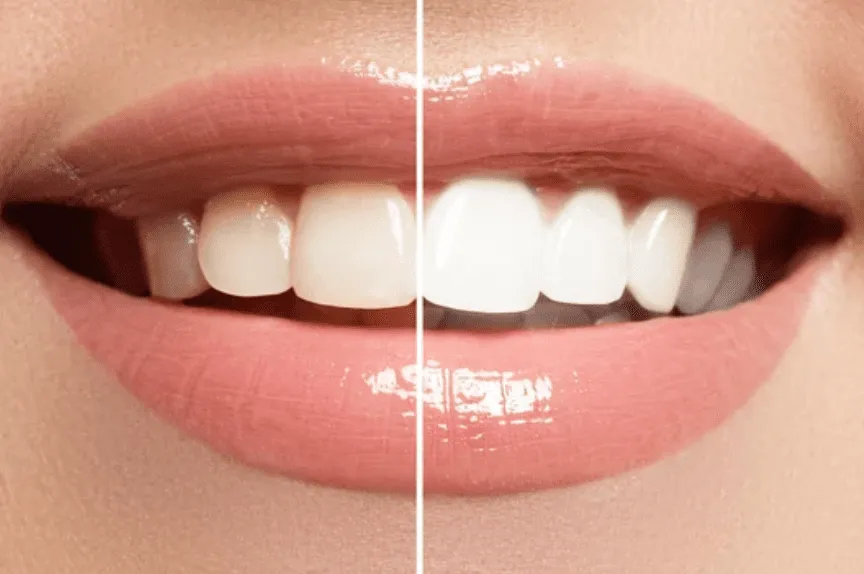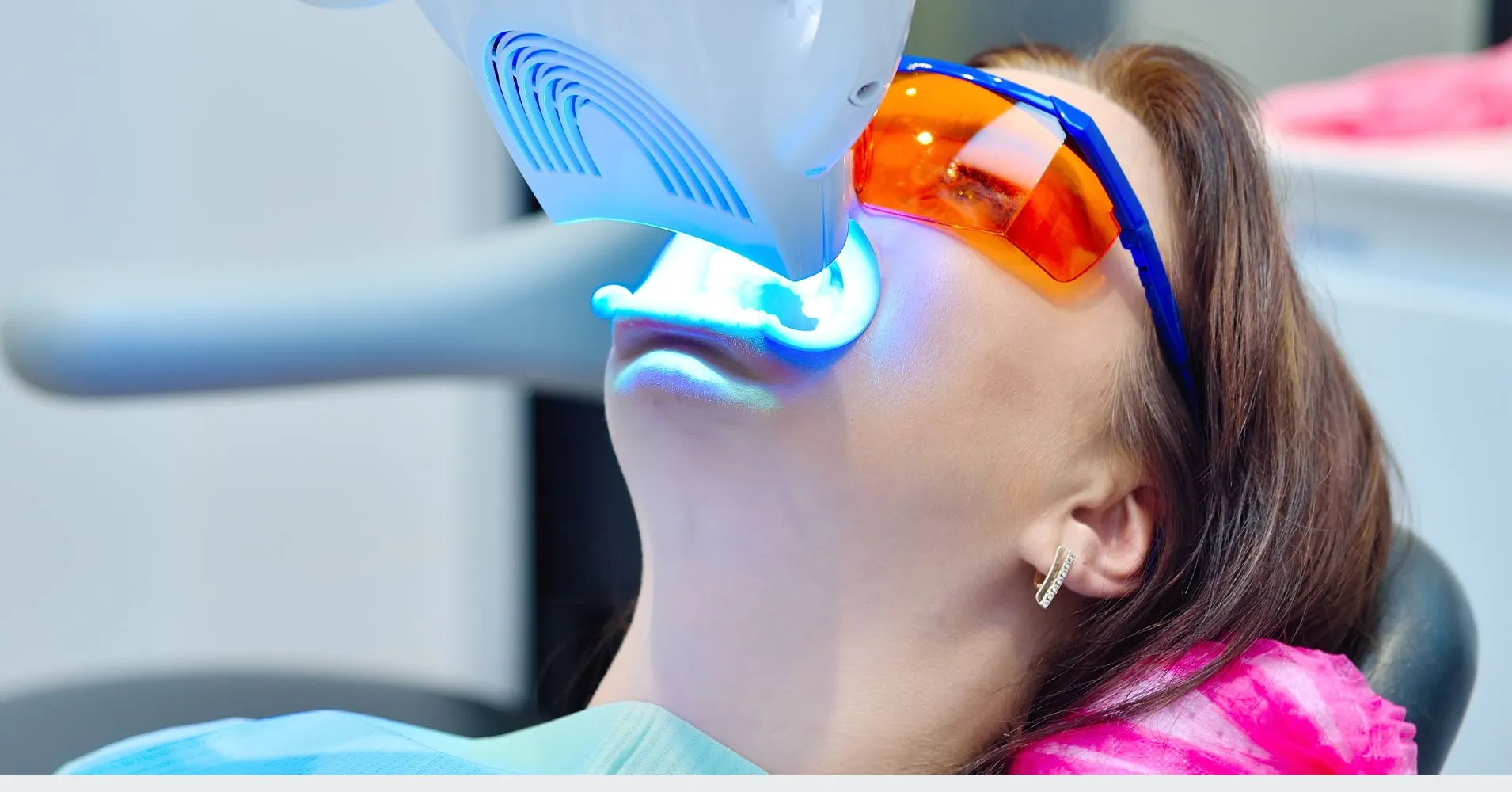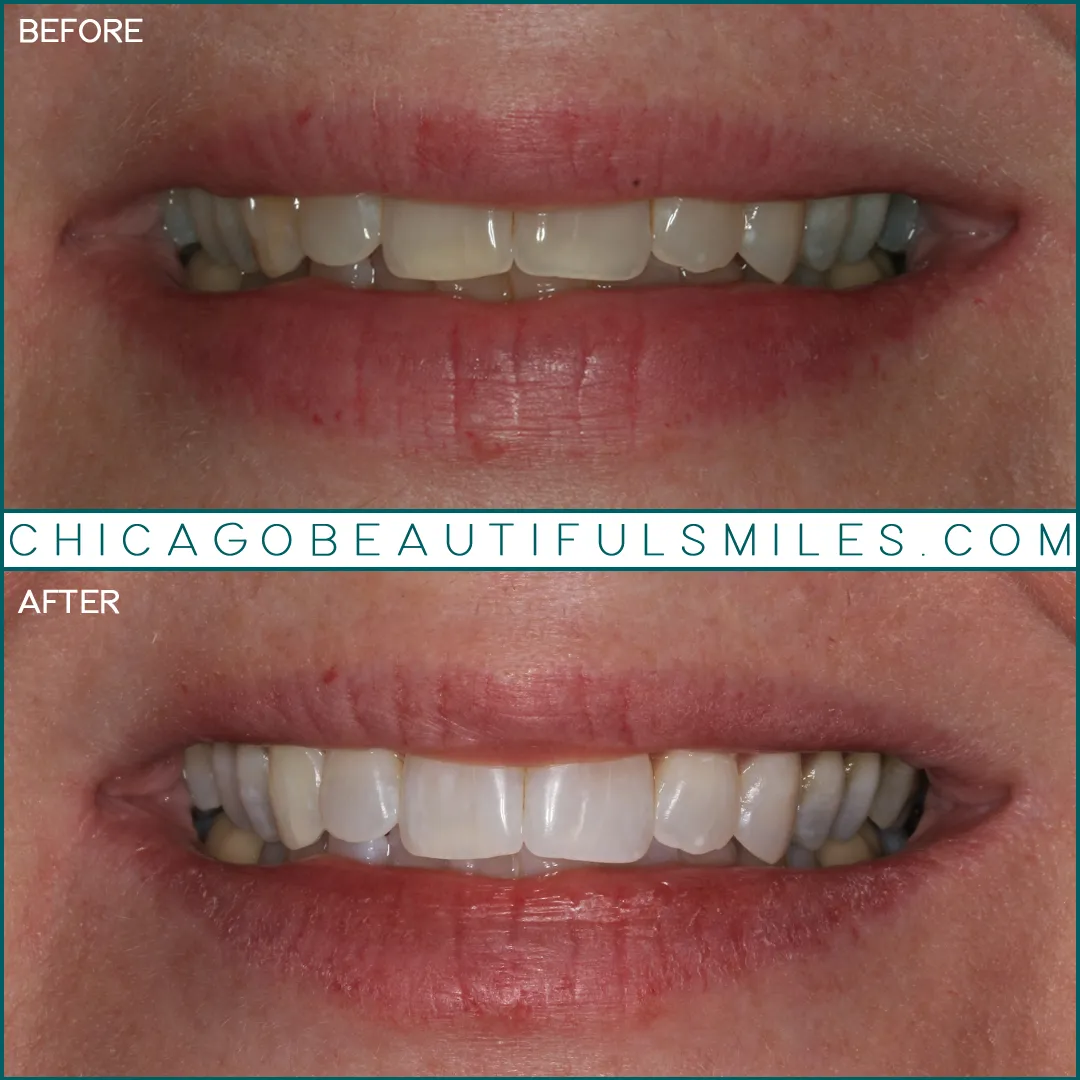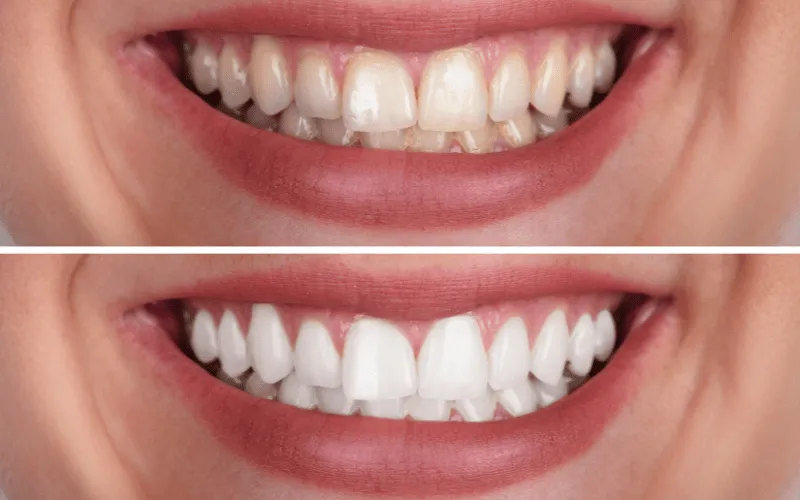What are the Primary Teeth Whitening Side Effects?
Teeth whitening has become a popular cosmetic procedure, promising a brighter, more confident smile. While it offers appealing results, it’s essential to understand the potential side effects associated with the process. Most teeth whitening treatments, whether at-home or professionally administered, rely on bleaching agents, primarily hydrogen peroxide or carbamide peroxide. These chemicals are effective at removing stains and discoloration, but they can also lead to various adverse reactions. Knowing these side effects empowers individuals to make informed decisions and take appropriate precautions to minimize risks. The most common side effects range from mild discomfort to more severe issues that may require professional dental intervention. Before embarking on a teeth whitening journey, it’s crucial to weigh the benefits against the potential drawbacks and consult with a dental professional to ensure the chosen method is safe and suitable for your specific needs.
Tooth Sensitivity After Teeth Whitening
One of the most frequently reported side effects of teeth whitening is increased tooth sensitivity. This sensitivity can manifest as a sharp, sudden pain or discomfort when consuming hot, cold, sweet, or acidic foods and drinks. The bleaching agents used in the whitening process, such as peroxide, can penetrate the enamel and reach the dentin, which contains microscopic tubules that lead to the tooth’s nerve. This stimulation of the nerve is what causes the sensitivity. The degree of sensitivity varies from person to person, with some experiencing only mild discomfort while others face significant pain. This sensitivity is usually temporary, subsiding within a few days to a few weeks after the whitening treatment is completed. However, understanding the causes and management strategies is crucial for a comfortable experience.
Causes of Tooth Sensitivity

Several factors contribute to tooth sensitivity following teeth whitening. The primary cause is the chemical action of peroxide-based bleaching agents on the tooth enamel. These agents open the pores in the enamel, allowing the bleaching chemicals to penetrate deeper and interact with the underlying dentin and nerve. The concentration of the whitening agent, the duration of its application, and the frequency of treatments can all influence the severity of sensitivity. Individuals with pre-existing dental conditions, such as enamel erosion, receding gums, or small cracks in their teeth, are also more susceptible to experiencing sensitivity. Furthermore, using whitening products excessively or incorrectly, such as leaving them on for longer than recommended, can exacerbate sensitivity issues. Recognizing these underlying causes helps in taking preventive measures and choosing the right whitening approach.
How to Manage Tooth Sensitivity
Fortunately, there are several effective ways to manage tooth sensitivity after teeth whitening. One of the most common recommendations is using desensitizing toothpaste. These toothpastes contain ingredients like potassium nitrate or stannous fluoride, which help block the tubules in the dentin, reducing nerve stimulation. Switching to a desensitizing toothpaste a few weeks before starting the whitening process can also help prepare your teeth. Avoiding excessively hot or cold foods and drinks can also minimize discomfort. Over-the-counter pain relievers, such as ibuprofen or acetaminophen, can help alleviate any pain associated with the sensitivity. In more severe cases, a dentist might recommend professional treatments like fluoride varnish or a prescription-strength desensitizing toothpaste. Following your dentist’s guidance and being patient is key, as sensitivity typically diminishes over time.
Gum Irritation and Inflammation
Gum irritation, also known as gingivitis, is another common side effect of teeth whitening. This occurs when the bleaching agents come into contact with the soft tissues of the gums, causing inflammation and discomfort. Symptoms can range from mild redness and swelling to more severe pain and bleeding. The level of irritation often depends on the concentration of the whitening agent, the application method, and the duration of contact with the gums. In many cases, gum irritation is a temporary condition that resolves within a few days after the whitening treatment is stopped. However, understanding the causes and how to prevent and manage it is important for a comfortable teeth whitening experience.
Reasons for Gum Irritation

Several factors can contribute to gum irritation during teeth whitening. The high concentration of hydrogen peroxide or carbamide peroxide in whitening products is the primary culprit. If the whitening agent comes into direct contact with the gums, it can cause irritation and inflammation. This is especially true if the product is not applied correctly or if the trays used for at-home whitening do not fit properly, allowing the gel to leak onto the gums. People with sensitive gums or pre-existing gum conditions, such as gingivitis or periodontitis, are also more likely to experience irritation. Prolonged exposure to whitening agents, whether from using products for longer than recommended or from frequent treatments, can further exacerbate gum problems. Proper application techniques and product selection are vital to minimize this risk.
Preventing Gum Issues
Preventing gum irritation during teeth whitening involves several key strategies. When using at-home whitening kits, ensure the trays fit snugly to prevent the gel from leaking. If the trays are not a perfect fit, consider getting custom-made trays from your dentist. Always follow the product instructions carefully, paying close attention to the recommended application time and frequency. For professional treatments, dentists typically use protective measures, such as rubber dams or liquid dam, to shield the gums from the whitening agents. After whitening, rinsing your mouth thoroughly with water can help remove any residual gel. Using a toothpaste designed for sensitive gums can also help soothe and protect the gum tissue. If you experience any signs of gum irritation, consult your dentist for advice and treatment. Regular dental check-ups are also important to maintain healthy gums before and after teeth whitening.
Enamel Damage Risks
While teeth whitening is generally considered safe, there are risks of enamel damage, particularly if the process is not done correctly or is overused. The enamel is the hard, protective outer layer of the tooth, and it plays a crucial role in preventing tooth decay and sensitivity. Excessive or improper use of whitening products can weaken the enamel, making the teeth more susceptible to erosion and damage. The impact on enamel is usually related to the concentration of peroxide used, the frequency of treatments, and the overall health of the teeth. Understanding these risks and taking preventive measures is essential to preserving the health and integrity of your teeth during the whitening process.
The Impact of Peroxide on Enamel

Peroxide-based whitening agents, while effective at removing stains, can potentially impact enamel. These agents work by penetrating the enamel and breaking down the stain molecules. However, they can also cause the enamel to become temporarily dehydrated and more porous. This makes the teeth more vulnerable to damage from acids and abrasion. Overuse of whitening products, especially those with high concentrations of peroxide, can lead to increased enamel porosity and a greater risk of erosion. This erosion can result in increased tooth sensitivity, as well as an increased risk of cavities. The duration and frequency of whitening treatments play a significant role in the potential impact on enamel; following guidelines and seeking professional guidance is crucial.
Mitigating Enamel Damage
Several steps can be taken to mitigate the risk of enamel damage during teeth whitening. Firstly, it’s important to follow the manufacturer’s instructions and the recommendations of your dentist. Avoid using whitening products excessively or more frequently than advised. Using lower-concentration whitening products can also reduce the risk of enamel damage. Applying a fluoride treatment after whitening can help remineralize the enamel and strengthen the teeth. Using a toothpaste with fluoride and avoiding abrasive toothbrushes can also protect the enamel. Maintaining good oral hygiene, including regular brushing, flossing, and dental check-ups, is essential. If you experience any signs of enamel erosion, such as increased sensitivity or changes in the appearance of your teeth, consult your dentist immediately. Professional guidance helps in selecting safe and effective whitening methods.
Allergic Reactions to Whitening Products
Although rare, allergic reactions to teeth whitening products can occur. These reactions are usually triggered by the ingredients in the whitening gel, such as peroxide, flavoring agents, or preservatives. The severity of the allergic reaction can range from mild to severe, depending on the individual’s sensitivity and the specific allergens involved. Recognizing the symptoms of an allergic reaction is crucial for prompt treatment and management. If you suspect you’re experiencing an allergic reaction, it’s important to stop using the product immediately and seek medical attention. Consulting with a dentist or allergist will help determine the cause of the reaction and recommend appropriate treatments or alternative whitening options.
Identifying Allergic Reactions

Symptoms of an allergic reaction to teeth whitening products can vary but often include the following. Skin irritation, such as redness, rash, or itching around the mouth or gums, is a common sign. Swelling of the lips, tongue, or face can also occur. Other symptoms may include hives, difficulty breathing, or a feeling of tightness in the throat. Some individuals might experience gastrointestinal issues, such as nausea, vomiting, or diarrhea. If you notice any of these symptoms after using a whitening product, it’s essential to stop using the product immediately. If the reaction is severe, seek immediate medical attention. Documenting the product you used and the symptoms you experienced can help your healthcare provider identify the allergen.
What to do in Case of Allergic Reactions
If you suspect you’re experiencing an allergic reaction to a teeth whitening product, the first step is to discontinue use immediately. Rinse your mouth thoroughly with water to remove any remaining product. Mild reactions, such as localized skin irritation, might resolve on their own within a few hours or days. For more severe reactions, seek medical attention promptly. Your healthcare provider might recommend antihistamines to reduce itching and swelling. In some cases, corticosteroids or epinephrine might be necessary to manage more serious symptoms. It’s important to inform your dentist or healthcare provider about the reaction, including the product used and the symptoms experienced. They can then help determine the allergen and recommend alternative whitening options or other treatments that are safe for you.
Potential for Chemical Burns
Although uncommon, chemical burns can occur as a result of teeth whitening treatments, especially if the whitening agent comes into prolonged contact with the soft tissues of the mouth. Chemical burns are caused by the high concentration of peroxide in the whitening products, which can irritate or damage the skin and oral tissues. This is more likely to happen if the whitening trays do not fit correctly, allowing the gel to leak onto the gums or other soft tissues. Improper application techniques, such as applying too much gel or leaving the product on for too long, can also increase the risk. Understanding how chemical burns can occur and what steps to take to prevent and treat them is essential for a safe teeth whitening experience.
Understanding Chemical Burns

Chemical burns from teeth whitening typically affect the gums, lips, and sometimes the inside of the cheeks. The severity of the burn depends on the concentration of the whitening agent and the duration of exposure. Mild burns might cause redness, swelling, and discomfort. More severe burns can lead to blistering, ulcers, and significant pain. The affected area might appear white or discolored. The risk of chemical burns is higher with at-home whitening kits if the trays don’t fit well or if the instructions are not followed correctly. Professional dental treatments often involve protective measures, such as rubber dams, to isolate the teeth and protect the soft tissues from the whitening agents. If you suspect a chemical burn, seek immediate dental attention.
Preventing and Treating Burns
To prevent chemical burns, always ensure that the whitening trays fit properly, and follow the product instructions carefully. Avoid applying excessive amounts of gel and do not leave the product on for longer than the recommended time. If you experience any discomfort or irritation during the whitening process, remove the trays immediately and rinse your mouth with water. If a chemical burn does occur, rinse the affected area with water and seek professional dental care. Your dentist can assess the severity of the burn and recommend appropriate treatments, such as topical medications to soothe the tissues and prevent infection. Over-the-counter pain relievers can help manage any discomfort. Following these preventive measures and seeking professional guidance can help minimize the risk of chemical burns and ensure a safe teeth whitening experience.
Other Possible Side Effects
In addition to the more common side effects, several other less frequently reported issues can arise from teeth whitening treatments. These can include changes in tooth shade, such as uneven whitening or a bluish tint. Digestive issues may also occur if the whitening agent is accidentally swallowed. While these side effects are not as prevalent as sensitivity or gum irritation, it’s important to be aware of them. Understanding these potential issues enables individuals to make informed decisions and take the necessary steps to minimize any adverse effects. Being mindful of these less common side effects ensures a comprehensive view of the overall teeth whitening experience and helps maintain good dental health.
Changes in Tooth Shade

Variations in tooth shade after whitening can occur, affecting the overall aesthetic result. Sometimes, teeth may not whiten evenly, resulting in blotchy or uneven color distribution. This can be due to variations in the thickness or porosity of the enamel, or it may be related to the presence of dental restorations, such as fillings or crowns, which do not whiten in the same way as natural teeth. In some cases, teeth may develop a bluish tint, especially if the whitening treatment is excessive or if the teeth are naturally translucent. It’s important to discuss expectations with your dentist before starting teeth whitening to manage realistic outcomes. Strategies to manage uneven whitening include professional treatments or touch-up procedures. Ensuring a consistent and predictable outcome requires careful planning and monitoring by a dental professional.
Digestive Issues
Although uncommon, digestive issues might arise if a significant amount of the whitening gel is swallowed during treatment. The main ingredient in whitening gels, peroxide, can cause mild gastrointestinal upset, such as nausea, vomiting, or diarrhea, if ingested in large quantities. This risk is more common with at-home whitening kits, especially if the trays don’t fit properly or if the individual accidentally swallows the gel. To minimize the risk, it’s important to ensure that the trays fit snugly and to avoid overfilling them with gel. Rinsing the mouth thoroughly with water after the whitening treatment can also help remove any residual gel. If you experience any digestive symptoms, seek medical attention. Following proper application techniques is critical to ensure a safe and comfortable teeth whitening process.
The Importance of Professional Guidance
Seeking professional guidance from a dentist is crucial for a safe and effective teeth whitening experience. Dentists can assess the condition of your teeth and gums, determine the most suitable whitening method, and provide customized advice. They can also identify any underlying dental issues that might affect the outcome or increase the risk of side effects. Professional treatments, such as in-office whitening, offer more controlled and often more effective results, while also minimizing potential risks. Regular dental check-ups before and after teeth whitening help in monitoring the health of your teeth and gums, and in addressing any potential issues early on. Consulting a dentist is vital to maximizing the benefits of teeth whitening while minimizing the risks, ensuring both a brighter smile and good oral health.
